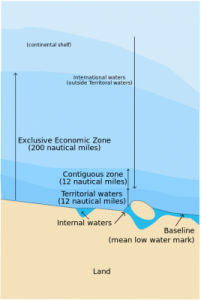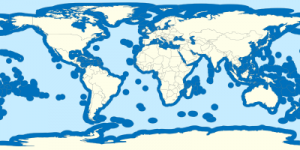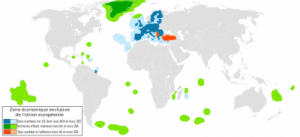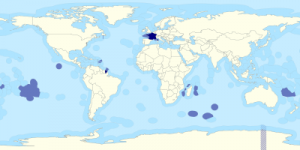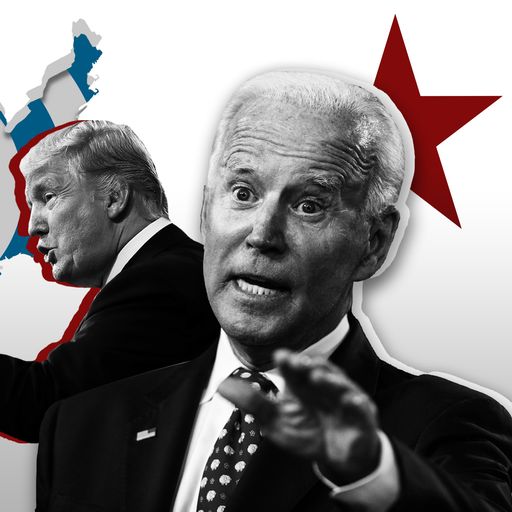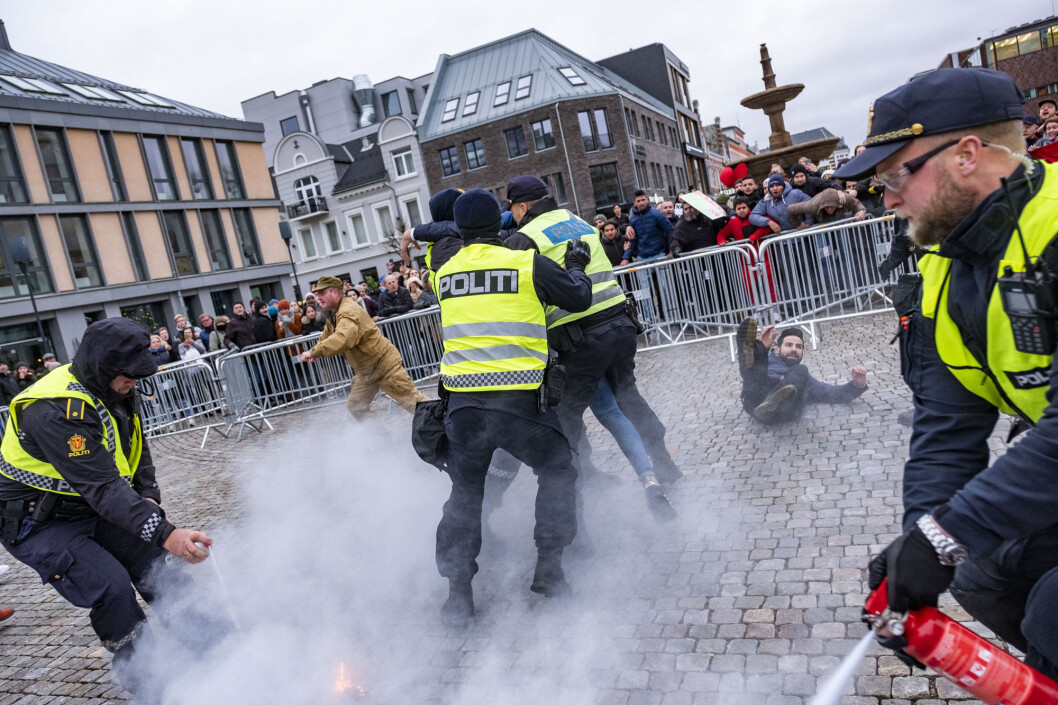Where the Pandemic Leaves the Climate Movement
Anneleen Kenis
Manuel Arias-Maldonado
Paolo Cossarini
Susan Baker
AUGUST 2020
GREEN EUROPEAN JOURNAL
As the entire globe is in the middle of an unprecedented pandemic, with great economic, social, and environmental consequences, it is worth recalling mass mobilisations like Extinction Rebellion and Fridays For Future which took the global scene in spring 2019. A year on, it is time to examine their claims and impact on public awareness of the climate emergency as well as current political discourse and policymaking. Paolo Cossarini spoke with three scholars from different European countries who highlight fundamental themes these movements helped bring to the fore. What emerges is a nuanced theoretical and practical debate about citizens’ mobilisation, green transition, and the prospects of climate action.
Paolo Cossarini: A year ago, Extinction Rebellion (XR) shut down London’s streets, as did Fridays for Future (FFF) in cities across the globe, making headlines worldwide. In 2020, streets have been shut down once more to prevent a health crisis. One year on, how have these movements shifted the debate on climate change?
Manuel Arias-Maldonado: In my view, these movements have not been as important as the increase in extreme weather events that have shaken public opinions in the last years, creating a feeling of urgency the movements themselves can profit from. It is the sense that something is palpably changing that propels public awareness. Protest movements are relevant, among young people especially, but they would be helpless in the absence of such material conditions which are, admittedly, as much objective as they are mediated by mass media.
Susan Baker: The climate movement is positive. However, the emphasis on “listen to science” is potentially problematic in that it fails to grasp that science does not reveal the truth but aspects of what is known. Climate science is narrow: it defines the issue in the language and framework of the natural sciences, ignoring the main causes of and solutions to climate change which lie in the social world in general, and in our economic model in particular. Neither of these groups have a critical grasp of the fundamental causes of climate change.
the emphasis on “listen to science” is potentially problematic in that it fails to grasp that science does not reveal the truth but aspects of what is known.
While XR and FFF have promoted public awareness, both are very moderate voices and have, consequently, shrunk the space for radical ones. On climate action, their focus on transition favours technocratic responses as opposed to radical transformation. It is therefore likely that transition management (transition to low carbon futures that allows for business as usual), as opposed to transformation, will take centre stage in climate action.
Where do you think the Covid-19 pandemic leaves the climate movement?
Anneleen Kenis: XR and FFF are remarkably absent in the current crisis though they seem to be slowly becoming more active again. The coronavirus pandemic might give the feeling that there are more important things to focus on now, but nothing could be further from the truth. In reality, the Covid-19 crisis is instructive because it has unveiled how societies deal with emergencies, the place of science in the public debate, and human-nature relationships. Furthermore, the pandemic could nudge us in the direction of a radically different, much more sustainable society, but it could also lead us to a society characterised by authoritarian control, moralisation, and securitisation.
the Covid-19 crisis is instructive because it has unveiled how societies deal with emergencies, the place of science in the public debate, and human-nature relationships.
There is no neutral answer to the coronavirus crisis, just as there is no neutral answer to climate change. What’s more, the pandemic continues to raise crucial questions: who will foot the bill? Will large economic sectors like the airline industry be saved with taxpayers’ money? What conditions will these sectors have to meet? Will generating even more profit and growth be an indispensable mission? Will the coronavirus-induced economic crisis be used to demarcate certain sectors as crucial and others as not? Will we invest in healthcare and public schooling instead of (polluting) companies?
Manuel Arias-Maldonado: Nobody knows. There are reasons to think that climate action may be encouraged after the pandemic – or even during the pandemic if it doesn’t end soon – as well as to fear that the return to normality will prioritise economic growth over sustainability concerns or climate mitigation. Mobilising the public all depends on how people will feel after this is over.
In the meantime, it may be possible to seize temporary feelings to rally support for climate-friendly coronavirus response legislation as a way to ensure a cleaner exit from the crisis. The climate movement can play a role in this mobilisation process by framing the pandemic as the first true catastrophe of the Anthropocene. However, this card should not be overplayed since the link is not always clear. Alternatively, the pandemic can be portrayed as an expression of careless modernity, one that does not take into account, for example, food security. This depiction brings globalisation and the call to make it more sustainable centre stage.
Susan Baker: It is clear that government-imposed restrictions on social gatherings have impacted the activities of climate activist groups. So far, FFF has stopped their street presence and XR have ceased their highly visible forms of public protest. They nevertheless continued their activism online throughout the lockdown. These groups relied heavily on civil protest to raise public awareness, believing that this would force governments and other key stakeholders to act. It is harder to credit posting a selfie with a placard during lockdown with the same impact. Digital activism can be easily dismissed as an individualised activity while the marches that took place in the streets, often noisily, can hardly be written off.
In the public arena, there is a danger that the voices that speak for nature and that seek climate action will once again become marginalised. There continues to be a great deal of attention paid to how to manage the pandemic, as we would expect. At the same time, there is a lack of discussion on the underlying causes – which lie in the destruction of ecosystems for trafficking of species – and how the problem will be addressed at source.
Despite these challenges, the quietening of our streets and the cleaning of our air during lockdowns have allowed people to see and hear nature again. Here lies the hope that people can carry this experience forward to form a new political consciousness about the environmentally destructive nature of our economic activities and the possibility of an alternative future.
Do you think an overhaul of the relationship between our economic systems and the environment is possible in the current moment? How can we make a green transition attractive to the economic and political forces desperately trying to stay afloat and return to business as usual?
Anneleen Kenis: I would start by questioning this question: do we really have to make sustainability attractive to economic forces and industry? Or should we rather put economic forces and industry under pressure to change? The environmental movement has bought too much into the idea that we can get everyone on board if we come up with an “attractive” vision. It reinforces the idea that we can save the world with technofixes, that nothing really has to change, and that air transport does not have to be fundamentally questioned after all. We need to apply pressure now that it is possible. Or refuse to rescue them: we should simply say “no” and take proper measures to ensure that future companies do not have all the tax and other advantages that the aviation sector has.
While a certain level of “greening” the capitalist economy is possible (capitalists can make money selling solar panels just as they make money selling coal or oil), there is a fundamental clash. This clash has several aspects and dimensions, but the huge cleavage is between pursuing economic growth and reducing pressure on the ecosystems we are fundamentally a part of.
Manuel Arias-Maldonado: Before the pandemic, I would have answered that winning the support of economic and political forces is possible by making a green transition both unnegotiable and profitable. The transition could be framed as something unavoidable but a possible source of innovation and value.
Now, the world has stopped for some time and I think that public perception will be impacted for two reasons. Firstly, the dangers associated with the Anthropocene have been highlighted. Secondly, lockdowns have shown that life can be better: cleaner, healthier, slower.
There is no one way to stop climate change but several.
Additionally, the economic situation may provide governments with the opportunity to foster new energy technologies, thus giving some unexpected momentum to the green transition. Emmanuel Macron has hinted that polluted air will not be tolerated anymore. Well, this is the time to start.
There is no one way to stop climate change but several. Some are more capitalist-friendly – by way of technological innovation and productivity and efficiency gains – while others are more community-based and depend on reducing the size of the economy.
Susan Baker: At present, there is a dynamic interplay between pressure for change and the return to old ways. Climate change has shown that it is no longer possible to see our economic activity in isolation from its ecological and social consequences. This realisation calls upon us to question equating human progress with the domination of nature.
Economic actors need to take responsibility for their actions. It is not a question of “making it attractive to them”. Attractive, in the traditional economic sense, means that the activity can be the source of profits. This model that allows some in society to generate excessive wealth at the cost of others, including nature, needs to change. We must change what is produced, how it is produced, evaluate who benefits, and at what cost. It would be a moral hazard to make a green transition attractive when what we need is a green transformation of society.
We must change what is produced, how it is produced, evaluate who benefits, and at what cost.
Do you think that there’s the potential for a paradigm shift away from an economy based on growth? What about the balance between collective and individual action?
Anneleen Kenis: There are many consumer goods with huge ecological costs for which it cannot be sincerely argued that they are essential to lead a healthy and comfortable life. The global fashion industry contributes more to climate change than shipping and aviation together. This is no surprise considering that, in the UK for instance, 300 000 items of clothes are thrown away every year [read more on the impacts of fast fashion]. A first step to promoting degrowth is banning advertisement. People are told on an almost continuous basis that they need all this stuff.
Everyone who has the capacity to make personal changes should consider doing so. However, as Giorgos Kallis argues, it is much easier, much more motivating, and more impactful to do so collectively [read about Kallis’ insights on limits and autonomy]. I decided 10 years ago not to fly anymore, but what difference does it make? If we were to make a similar commitment collectively, the impact could be huge.
Manuel Arias-Maldonado: There is no consensus on degrowth as the way to go in terms of building a particular kind of society. It would be an accepted model if it was the only way to prevent planetary collapse – which it is not. There are alternative ways to promote decarbonisation and sustainability and governments should focus on those. What’s more, economic growth still matters as a way of producing welfare and wellbeing. Degrowth must, therefore, be defended as a morally valuable choice. If it were to persuade a majority, it would be the blueprint for a new way of living.
As I see it, relying on such collective sacrifice is utterly unrealistic. Nevertheless, people should be made aware of the fact that human habitation of the planet depends on the planet’s conditions, which in turn depend on how people behave. This understanding could bring our planetary impact into focus and potentially lead to better policy and technological innovation.
Susan Baker: The growth-oriented model of development pursued by Western industrial societies cannot be carried into the future, either in its present forms or at its present pace, as evidenced by climate change. We cannot have continuous growth in a system characterised by resource limits and planetary boundaries. Climate change has been caused by a growth-orientated model, achieved through ever-increasing levels of consumption. This artificially stimulated consumption brings untold wealth for the few and impoverishment for the many. Many now also reject the idea that consumption is the most important contributor to human welfare. This new value is not compatible with capitalism. Degrowth is no longer a radical alternative, but a necessity.
We cannot have continuous growth in a system characterised by resource limits and planetary boundaries.
A healthy society and the wellbeing of its members rests on acts of services and the sense of community rather than on consumption. Adopting this model requires changing our values so that one’s social standing is not determined by what they consume and put on display, but by how they engage in society to protect the interests of others, including those of other life forms, in ways that promote justice and equity.
While personal change is important, structural factors can make them unsustainable. To move to a new model of economy and society, everyday actions would need to be accompanied by structural changes. As we rethink, for example, the way we travel, our food and energy consumption, the structures underlying these – trade, financial, food systems and our economic system overall – must be transformed as well.
As the entire globe is in the middle of an unprecedented pandemic, with great economic, social, and environmental consequences, it is worth recalling mass mobilisations like Extinction Rebellion and Fridays For Future which took the global scene in spring 2019. A year on, it is time to examine their claims and impact on public awareness of the climate emergency as well as current political discourse and policymaking. Paolo Cossarini spoke with three scholars from different European countries who highlight fundamental themes these movements helped bring to the fore. What emerges is a nuanced theoretical and practical debate about citizens’ mobilisation, green transition, and the prospects of climate action.
Paolo Cossarini: A year ago, Extinction Rebellion (XR) shut down London’s streets, as did Fridays for Future (FFF) in cities across the globe, making headlines worldwide. In 2020, streets have been shut down once more to prevent a health crisis. One year on, how have these movements shifted the debate on climate change?
Manuel Arias-Maldonado: In my view, these movements have not been as important as the increase in extreme weather events that have shaken public opinions in the last years, creating a feeling of urgency the movements themselves can profit from. It is the sense that something is palpably changing that propels public awareness. Protest movements are relevant, among young people especially, but they would be helpless in the absence of such material conditions which are, admittedly, as much objective as they are mediated by mass media.
Susan Baker: The climate movement is positive. However, the emphasis on “listen to science” is potentially problematic in that it fails to grasp that science does not reveal the truth but aspects of what is known. Climate science is narrow: it defines the issue in the language and framework of the natural sciences, ignoring the main causes of and solutions to climate change which lie in the social world in general, and in our economic model in particular. Neither of these groups have a critical grasp of the fundamental causes of climate change.
the emphasis on “listen to science” is potentially problematic in that it fails to grasp that science does not reveal the truth but aspects of what is known.
While XR and FFF have promoted public awareness, both are very moderate voices and have, consequently, shrunk the space for radical ones. On climate action, their focus on transition favours technocratic responses as opposed to radical transformation. It is therefore likely that transition management (transition to low carbon futures that allows for business as usual), as opposed to transformation, will take centre stage in climate action.
Where do you think the Covid-19 pandemic leaves the climate movement?
Anneleen Kenis: XR and FFF are remarkably absent in the current crisis though they seem to be slowly becoming more active again. The coronavirus pandemic might give the feeling that there are more important things to focus on now, but nothing could be further from the truth. In reality, the Covid-19 crisis is instructive because it has unveiled how societies deal with emergencies, the place of science in the public debate, and human-nature relationships. Furthermore, the pandemic could nudge us in the direction of a radically different, much more sustainable society, but it could also lead us to a society characterised by authoritarian control, moralisation, and securitisation.
the Covid-19 crisis is instructive because it has unveiled how societies deal with emergencies, the place of science in the public debate, and human-nature relationships.
There is no neutral answer to the coronavirus crisis, just as there is no neutral answer to climate change. What’s more, the pandemic continues to raise crucial questions: who will foot the bill? Will large economic sectors like the airline industry be saved with taxpayers’ money? What conditions will these sectors have to meet? Will generating even more profit and growth be an indispensable mission? Will the coronavirus-induced economic crisis be used to demarcate certain sectors as crucial and others as not? Will we invest in healthcare and public schooling instead of (polluting) companies?
Manuel Arias-Maldonado: Nobody knows. There are reasons to think that climate action may be encouraged after the pandemic – or even during the pandemic if it doesn’t end soon – as well as to fear that the return to normality will prioritise economic growth over sustainability concerns or climate mitigation. Mobilising the public all depends on how people will feel after this is over.
In the meantime, it may be possible to seize temporary feelings to rally support for climate-friendly coronavirus response legislation as a way to ensure a cleaner exit from the crisis. The climate movement can play a role in this mobilisation process by framing the pandemic as the first true catastrophe of the Anthropocene. However, this card should not be overplayed since the link is not always clear. Alternatively, the pandemic can be portrayed as an expression of careless modernity, one that does not take into account, for example, food security. This depiction brings globalisation and the call to make it more sustainable centre stage.
Susan Baker: It is clear that government-imposed restrictions on social gatherings have impacted the activities of climate activist groups. So far, FFF has stopped their street presence and XR have ceased their highly visible forms of public protest. They nevertheless continued their activism online throughout the lockdown. These groups relied heavily on civil protest to raise public awareness, believing that this would force governments and other key stakeholders to act. It is harder to credit posting a selfie with a placard during lockdown with the same impact. Digital activism can be easily dismissed as an individualised activity while the marches that took place in the streets, often noisily, can hardly be written off.
In the public arena, there is a danger that the voices that speak for nature and that seek climate action will once again become marginalised. There continues to be a great deal of attention paid to how to manage the pandemic, as we would expect. At the same time, there is a lack of discussion on the underlying causes – which lie in the destruction of ecosystems for trafficking of species – and how the problem will be addressed at source.
Despite these challenges, the quietening of our streets and the cleaning of our air during lockdowns have allowed people to see and hear nature again. Here lies the hope that people can carry this experience forward to form a new political consciousness about the environmentally destructive nature of our economic activities and the possibility of an alternative future.
Do you think an overhaul of the relationship between our economic systems and the environment is possible in the current moment? How can we make a green transition attractive to the economic and political forces desperately trying to stay afloat and return to business as usual?
Anneleen Kenis: I would start by questioning this question: do we really have to make sustainability attractive to economic forces and industry? Or should we rather put economic forces and industry under pressure to change? The environmental movement has bought too much into the idea that we can get everyone on board if we come up with an “attractive” vision. It reinforces the idea that we can save the world with technofixes, that nothing really has to change, and that air transport does not have to be fundamentally questioned after all. We need to apply pressure now that it is possible. Or refuse to rescue them: we should simply say “no” and take proper measures to ensure that future companies do not have all the tax and other advantages that the aviation sector has.
While a certain level of “greening” the capitalist economy is possible (capitalists can make money selling solar panels just as they make money selling coal or oil), there is a fundamental clash. This clash has several aspects and dimensions, but the huge cleavage is between pursuing economic growth and reducing pressure on the ecosystems we are fundamentally a part of.
Manuel Arias-Maldonado: Before the pandemic, I would have answered that winning the support of economic and political forces is possible by making a green transition both unnegotiable and profitable. The transition could be framed as something unavoidable but a possible source of innovation and value.
Now, the world has stopped for some time and I think that public perception will be impacted for two reasons. Firstly, the dangers associated with the Anthropocene have been highlighted. Secondly, lockdowns have shown that life can be better: cleaner, healthier, slower.
There is no one way to stop climate change but several.
Additionally, the economic situation may provide governments with the opportunity to foster new energy technologies, thus giving some unexpected momentum to the green transition. Emmanuel Macron has hinted that polluted air will not be tolerated anymore. Well, this is the time to start.
There is no one way to stop climate change but several. Some are more capitalist-friendly – by way of technological innovation and productivity and efficiency gains – while others are more community-based and depend on reducing the size of the economy.
Susan Baker: At present, there is a dynamic interplay between pressure for change and the return to old ways. Climate change has shown that it is no longer possible to see our economic activity in isolation from its ecological and social consequences. This realisation calls upon us to question equating human progress with the domination of nature.
Economic actors need to take responsibility for their actions. It is not a question of “making it attractive to them”. Attractive, in the traditional economic sense, means that the activity can be the source of profits. This model that allows some in society to generate excessive wealth at the cost of others, including nature, needs to change. We must change what is produced, how it is produced, evaluate who benefits, and at what cost. It would be a moral hazard to make a green transition attractive when what we need is a green transformation of society.
We must change what is produced, how it is produced, evaluate who benefits, and at what cost.
Do you think that there’s the potential for a paradigm shift away from an economy based on growth? What about the balance between collective and individual action?
Anneleen Kenis: There are many consumer goods with huge ecological costs for which it cannot be sincerely argued that they are essential to lead a healthy and comfortable life. The global fashion industry contributes more to climate change than shipping and aviation together. This is no surprise considering that, in the UK for instance, 300 000 items of clothes are thrown away every year [read more on the impacts of fast fashion]. A first step to promoting degrowth is banning advertisement. People are told on an almost continuous basis that they need all this stuff.
Everyone who has the capacity to make personal changes should consider doing so. However, as Giorgos Kallis argues, it is much easier, much more motivating, and more impactful to do so collectively [read about Kallis’ insights on limits and autonomy]. I decided 10 years ago not to fly anymore, but what difference does it make? If we were to make a similar commitment collectively, the impact could be huge.
Manuel Arias-Maldonado: There is no consensus on degrowth as the way to go in terms of building a particular kind of society. It would be an accepted model if it was the only way to prevent planetary collapse – which it is not. There are alternative ways to promote decarbonisation and sustainability and governments should focus on those. What’s more, economic growth still matters as a way of producing welfare and wellbeing. Degrowth must, therefore, be defended as a morally valuable choice. If it were to persuade a majority, it would be the blueprint for a new way of living.
As I see it, relying on such collective sacrifice is utterly unrealistic. Nevertheless, people should be made aware of the fact that human habitation of the planet depends on the planet’s conditions, which in turn depend on how people behave. This understanding could bring our planetary impact into focus and potentially lead to better policy and technological innovation.
Susan Baker: The growth-oriented model of development pursued by Western industrial societies cannot be carried into the future, either in its present forms or at its present pace, as evidenced by climate change. We cannot have continuous growth in a system characterised by resource limits and planetary boundaries. Climate change has been caused by a growth-orientated model, achieved through ever-increasing levels of consumption. This artificially stimulated consumption brings untold wealth for the few and impoverishment for the many. Many now also reject the idea that consumption is the most important contributor to human welfare. This new value is not compatible with capitalism. Degrowth is no longer a radical alternative, but a necessity.
We cannot have continuous growth in a system characterised by resource limits and planetary boundaries.
A healthy society and the wellbeing of its members rests on acts of services and the sense of community rather than on consumption. Adopting this model requires changing our values so that one’s social standing is not determined by what they consume and put on display, but by how they engage in society to protect the interests of others, including those of other life forms, in ways that promote justice and equity.
While personal change is important, structural factors can make them unsustainable. To move to a new model of economy and society, everyday actions would need to be accompanied by structural changes. As we rethink, for example, the way we travel, our food and energy consumption, the structures underlying these – trade, financial, food systems and our economic system overall – must be transformed as well.


